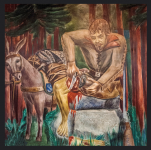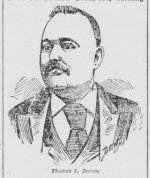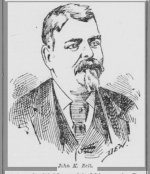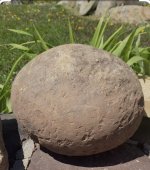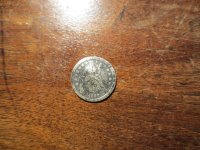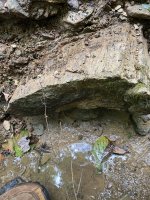Old Bookaroo
Silver Member
- Dec 4, 2008
- 4,318
- 3,510
Legends of Lost Mines – The Lost Pegleg - 1892
A considerable amount of romance attaches to all stories of lost mines. It could not well be otherwise, as the mines spoken of as “lost” are almost invariably in some wild region full of perils of onekind or another. If the lost mines are not in barren waterless region they are in a section of country jealously guarded by hostile savages. With every story of a lost mine goes more or less of tragedy. The mines would be “lost” were it not that the men who claim to have once found them have in almost every case lost either their lives or their wits soon after making their wonderful “finds.”
…
The “Pegleg Smith” is a lost mine of the Colorado desert. It was discovered by Smith, a man with a wooden leg, in 1837, while piloting a party of trappers from Yuma to Los Angeles. The mine is supposed to be somewhere to the northward of Carissa Creek station, on the old Butterfield state road. The landmarks are three small hills in the open desert. One of these hills (the largest) is composed of black quartz or spar, and is alive and glittering with gold – “millions in sight.” Smith never again found his mine, though he went to look for it after gold was discovered in California, but it was found in the 60’s by a miner en route from Yuma to Los Angeles by a cut-off. This man told the same story that years before had been told by Smith – it was a mountain of black rock blazing with gold. He carried to Los Angeles over $7,000 in hastily gathered nuggets. At Los Angeles he was stricken with fever and was attended by Dr. DeCourcey. After getting upon his feet again he and the doctor were preparing to go to the mine when he suffered a relapse and died.
The “Pegleg” has been much sought for, and the search still continues. On the 22[SUP]nd[/SUP] of February, this year [1892], Thomas Doran and John K. Bell left San Francisco to take another look for the lost mines. With them goes as photographer and botanist, H. L. Forrest of New York. The party will be well supplied with wagons and pack animals. In 1886, Mr. Doran explored forty square miles of country south of Carissa creek; this trip he will explore the regions to the northward of that station. This time he goes on the search with valuable points obtained from George Montgomery, discoverer of the supposed Breyfogle mine (mentioned above) and a map furnished him by an old miner, who says it is a tracing made for him by Pegleg himself, and shows the route he took from Yuma to Los Angeles, and the three hills and other landmarks as the old fellow remembered them. … – Denver Mining Industry.
Sierra County Advocate (Hillsborough, Sierra County, New Mexico – Library of Congress cites Kingston, N.M.) – April 8, 1892 – Volume X. - No. 535
Good luck to all,
The Old Bookaroo
Amazon Forum Fav 👍
Last edited:
